Norway's summer city is a family-friendly destination with good summer weather and many things to see and do. Here's our Kristiansand travel guide to help you plan your trip, whatever time of year you visit.
Welcome to Kristiansand, Norway's southern gem where the sea meets history and culture. Despite being the country's fifth largest city, Kristiansand remains off-the-radar for many independent travellers. It's time to put that right.
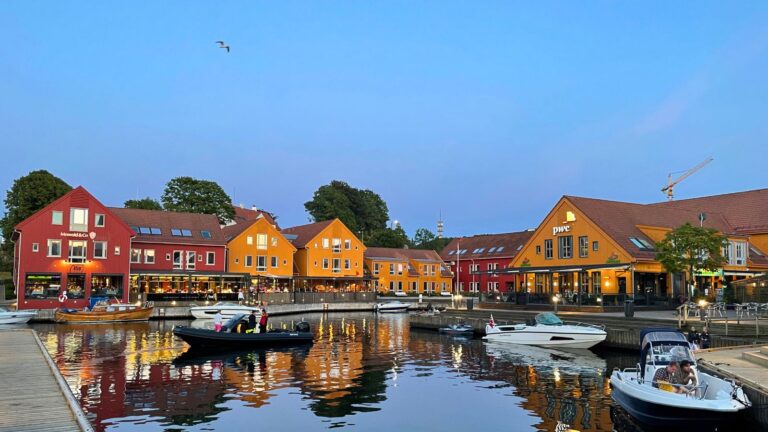
Up until recently, I had visited the city a total of three times. Each time I had been greeted with lovely weather. On each occasion, locals took full advantage by hanging out in the delightful waterfront area.
For a change, my most recent visit was in the winter. I wanted to see some of the city's new cultural attractions, and experience what a city renowned for its summer weather was like in the winter.
My verdict? There's plenty to see and do here, no matter when you visit. I do recommend a summer visit, but don't rule out the off-season if you fancy a city break in Norway.
Whether you're seeking thrilling outdoor adventures, cultural experiences, or just a peaceful retreat by the coast, this guide offers all you need to discover the best of Kristiansand.
Introduction to Kristiansand
As the biggest town on Norway's southern coast, Kristiansand is home to approximately 116,000 people.
Kristiansand Travel Resources: Make the most of your trip to Kristiansand with these recommended travel resources:
🛏️ Find & Book a Hotel
🚘 Car Rental in Kristiansand
🚨 Travel Insurance
📸 Book Tours & Experiences
The city attracts a lot of domestic tourists during the summer, as do the surrounding towns. Some international visitors arrive on the ferry from Denmark, while many other arrive as day visitors from cruise ships.
It's a great base to explore the stretch of idyllic coastline and islands of Southern Norway that charms all during the warm summer months. For example, on a recent visit to Kristiansand, I took the bus to the coastal town of Grimstad.
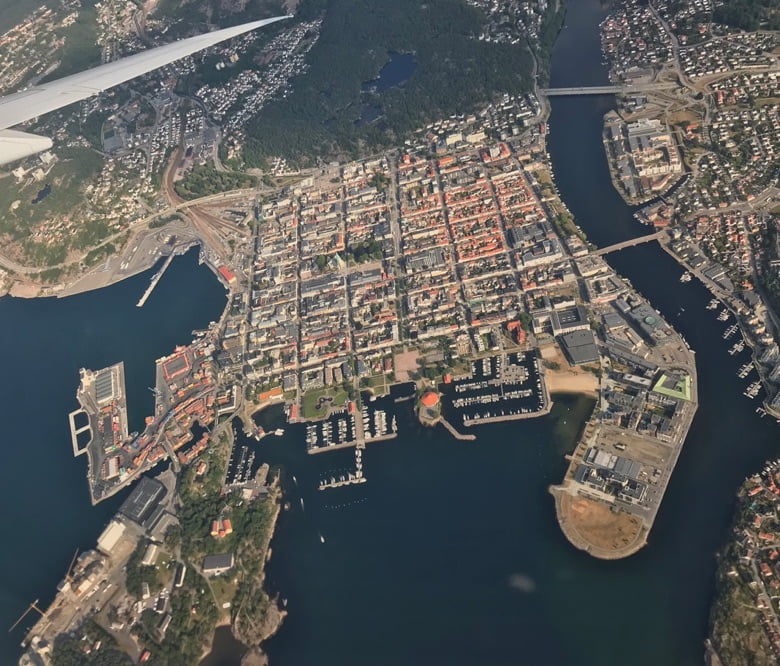
While the coastline is attractive, the entire central area is nice to stroll around. Known as Kvadraturen, the city is compact and easy to get around given its grid structure. That's clearly seen from this photo I snapped from the plane as I was leaving!
Now, let's take a look at some of the top things to do in Kristiansand.
Family Fun at Dyreparken
On my recent winter visit, I finally made it to Dyreparken, one of Norway's biggest tourist attractions. Known in English as Kristiansand Zoo & Amusement Park, this wonderful attraction is open year-round thanks to the southern climate.
While the amusement rides and outdoor shows are mostly closed in winter, the animal park remains a fantastic place to visit. It’s home to animal life from all over the world. I know zoo’s aren't everyone's cup of tea, but I was impressed with the animal welfare measures in place here.
The animals of the vast Nordic wilderness park—like wolves, lynxes, and wolverines—actually thrive in the colder months, and the quieter paths and snowy surroundings make for a peaceful, almost magical experience.
Here I saw one of the organised events, feeding time for the wolves, at which a local guide talked through the animal’s characteristics and habitat, in both Norwegian and English.
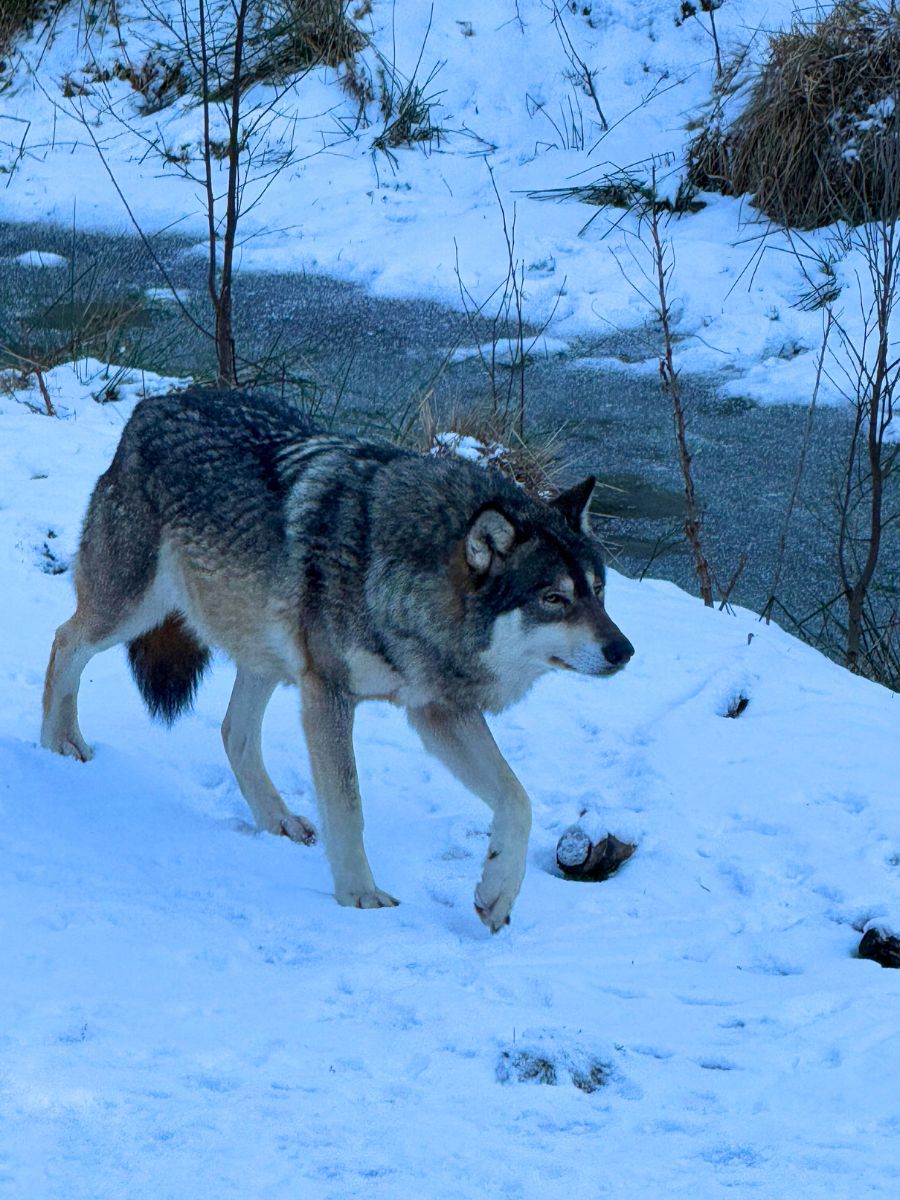
Be sure to dress warmly, as the park is expansive, and sturdy footwear is essential if snow or ice covers the ground. For those seeking a break from the cold, the zoo’s indoor areas, including the tropical house and rainforest exhibit, offer a welcome escape into warmer climates.
I’d also advise bringing some food or at least some snacks, as dining options are limited outside of high season.
Dyreparken is also home to some of Norway’s most beloved children’s characters—including the infamous pirate Kaptein Sabeltann, who rules over his own section of the park.
In the summer, his shows and themed areas are a massive draw, especially for Norwegian families. However, this part of the park is essentially shut down in the winter months, so just keep that in mind if you're planning an off-season visit.
Meanwhile, the colourful Cardamom Town (Kardemomme by), inspired by a beloved Norwegian children’s book, remains a delight year-round. Kids and adults alike will love wandering through the whimsical houses and spotting familiar locations from the story.
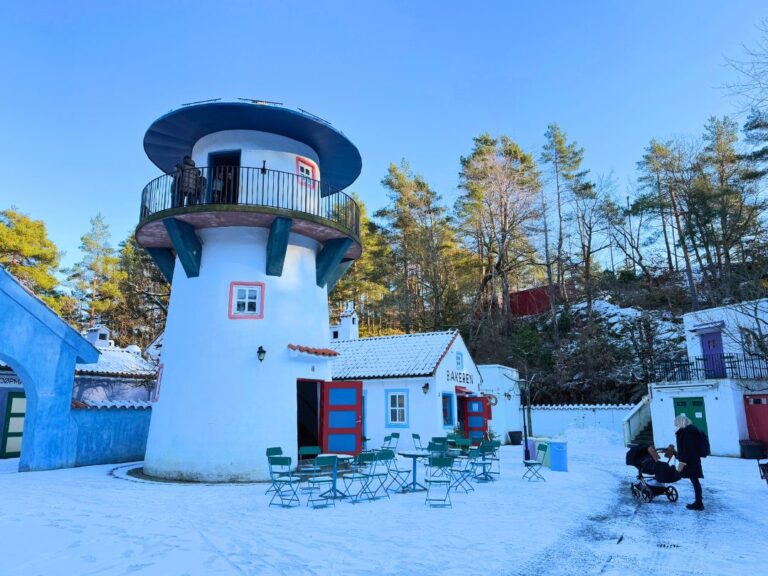
The big kid that I am, the first thing I did was climb the tower to get this view over the town and the park. In the summer, characters from the storybook come to life.
Before you leave, be sure to sample a cardamom bun from the cardamom town bakery!
And finally, there’s a large water park next door—Badelandet—which is open in summer and partially indoors, offering both outdoor slides and indoor pools and play areas. It’s another reason Dyreparken is such a popular destination for families during the warmer months.
Kunstsilo
The city’s newest cultural landmark, Kunstsilo, has transformed a historic grain silo into a striking contemporary art museum.
Entering the building, there is an undeniable wow factor. You just can’t help but look up. The dramatic silo hall was created by removing 3,500 tonnes of concrete. I took the lift to the top to take a closer look at what remained.
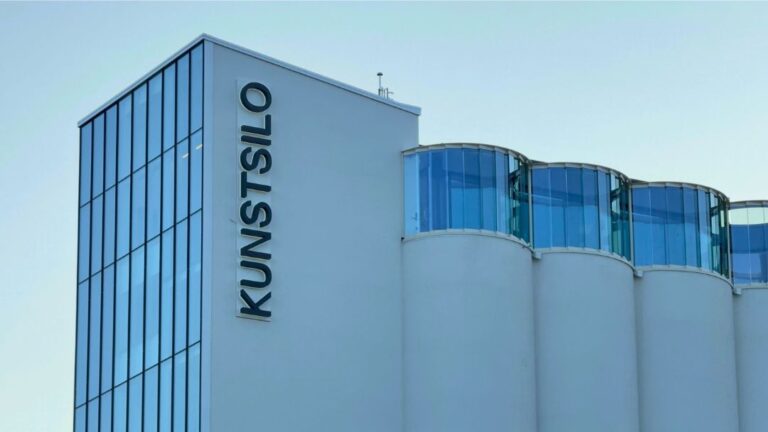
Despite the striking first impression of Kinstsilo, it is Nikolai Tangen’s donation of Nordic modernist art that truly defines the museum’s identity. There’s also a dynamic lineup of temporary exhibitions forming the core of its program.
There’s a lot of interactive elements within Kunstsilo, and also a lot for children to do, both in the form of organised events and just regular exhibits.
On the second floor, S-Lab offers immersive productions. At the time of my visit, it hosted ‘Ocean Deep', an immersive exhibition exploring fragile and endangered ocean ecosystems, where art and technology merge to let visitors interact with the artwork in real-time.
Finally, I highly recommend the bistro, regardless of whether you’re visiting the gallery or not. The fish soup was excellent.
Kunstsilo’s striking silhouette stands beside Kilden Performing Arts Centre, another bold Kristiansand landmark with its dramatic oak-clad waterfront façade. There’s plenty of events on the calendar throughout the year, although much of what’s on will be aimed at the Norwegian market.
Kristiansand Cathedral
The grand neo-Gothic Kristiansand Cathedral stands as a centrepiece in the town square of the Kvadraturen district, with a seating capacity for 1,000 people.
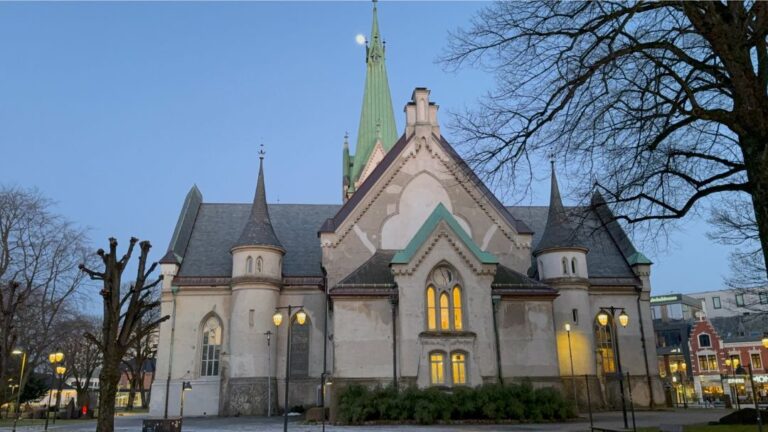
This architectural marvel is renowned for its pointed arches, ribbed vaults, and an impressive array of stained glass windows that illuminate its interior. A historical beacon, it occupies a site with roots back to a modest wooden church from 1645.
The cathedral serves as a community hub, hosting regular services and events that reflect its cultural significance. Its rich decor, including a finely crafted organ and a striking altarpiece, adds to the spiritual ambiance.
The cathedral is in the same location as three previous buildings, the oldest being a small wooden church believed to have been built in 1645.
The Cathedral square hosts a fountain, the city hall, library, other public buildings, plus some bars and restaurants. While it’s more lively during the summer, the square also played host to an ice skating rink during my winter visit.
The City Beach
Kristiansand is unique among Norwegian cities for boasting one of the few truly great urban beaches in the country.
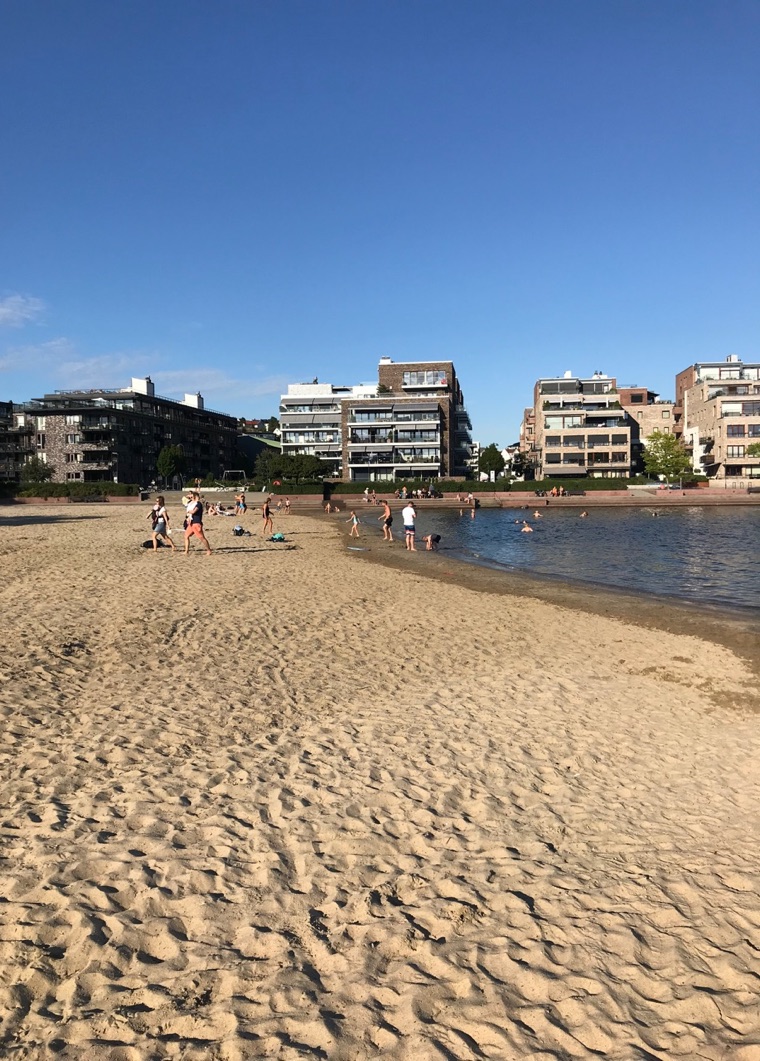
This pristine Blue Flag beach, a distinction shared by only a handful of others in Norway, offers visitors a perfect blend of city convenience and natural beauty.
Facilities include a swimming pier, well-maintained public restrooms, and a popular skatepark, making it a favourite spot for both relaxation and recreation. The beach's central location and excellent amenities make it a lively gathering place.
Waterfront Promenade
In Kristiansand, a very pleasant path leads from the city beach all the way down to the Fiskebrygga harbour and Odderøya island.
This waterfront promenade is an ideal route for leisurely walks or cycling, offering views of the ocean and bustling marina activity. Along the way, visitors can enjoy art installations, ice-cream stalls, and benches to watch the world go by.
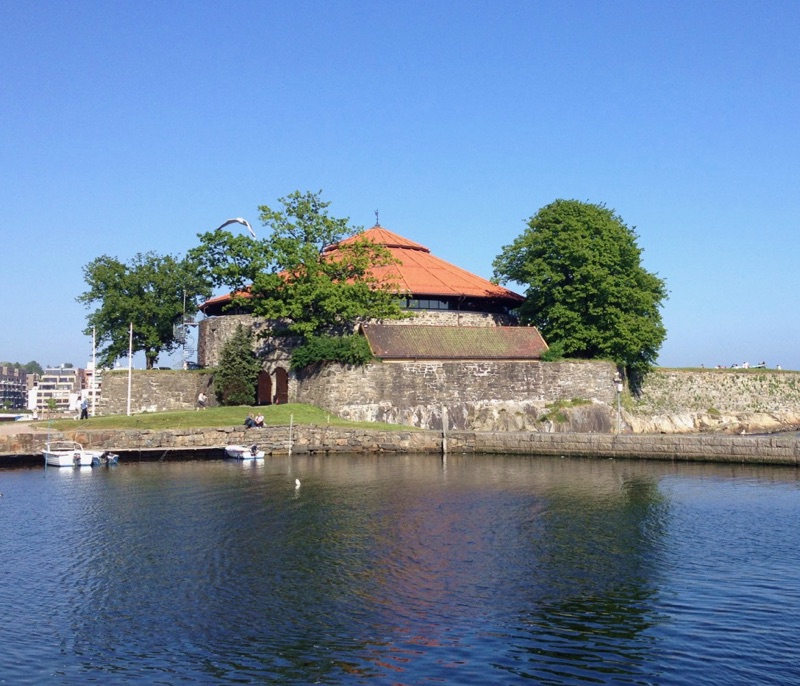
Another interesting feature of the waterfront close to the beach is the 17th-century Christianholm Fortress, a landmark in the history of Kristiansand.
Originally constructed by King Christian IV on an islet to defend the city, the fortress is now connected to the mainland and serves as a popular spot for walking, sunbathing, and recreational activities.
This historical site offers visitors a chance to explore its old cannons and walls while enjoying panoramic views of the surrounding area.
Odderøya Island
The waterfront promenade is not the only green space to enjoy in Kristiansand. Far from it, in fact.
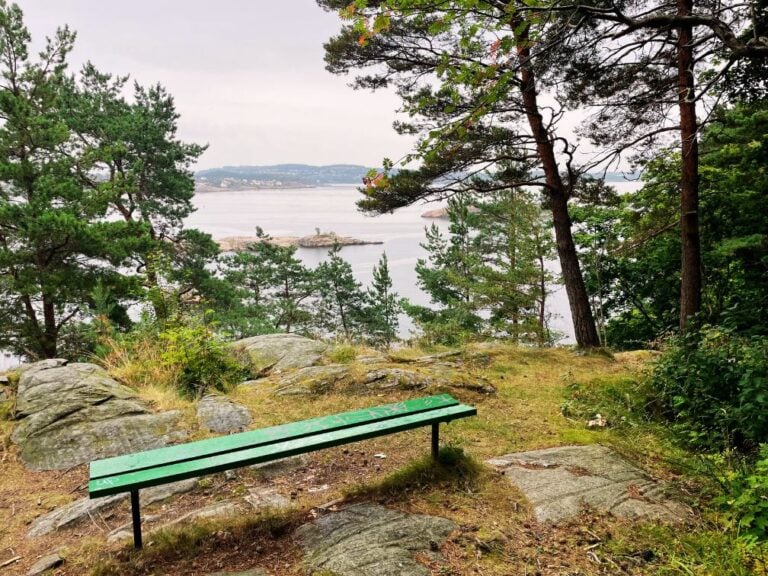
Odderøya, once a bustling shipyard and military base, has transformed into Kristiansand's cultural and recreational heart. This picturesque island, connected by bridges to the city centre, offers lush landscapes and panoramic views of the sea.
Today, it's a hub for art and music, hosting numerous festivals and concerts throughout the year.
Nature trails and historical sites, including remnants of its past military significance, make it a popular destination for both locals and tourists seeking a blend of nature, culture, and history in a serene waterfront setting.
Baneheia
150 years ago, Baneheia was little more than uninviting heathland. But by using garrison soldiers, more than 40,000 trees were planted in two years, a number the increased to 100,000 by the turn of the century.
Baneheia has evolved into a beloved green oasis where residents and visitors alike can engage in activities like hiking, fishing, and swimming in its crystal-clear lakes.

Locally, the area is renowned for its natural beauty and recreational offerings, but also for one of Norway's most notorious criminal cases. Nevertheless, Baneheia remains a supremely popular recreational area.
The network of well-maintained trails and scenic overlooks provide perfect spots for picnicking and wildlife watching, making it a popular destination throughout the year for those looking to reconnect with nature.
Posebyen
Posebyen, known as Kristiansand’s ‘old town', is a charming historical area, known for its well-preserved wooden houses dating back to the 18th and 19th centuries.
This quaint neighbourhood offers a picturesque stroll through narrow streets lined with white picket fences and blooming gardens.
Just bear in mind it's an active residential area, so do respect people's privacy—oh, and watch out for cyclists, as there’s many cycle paths through here.
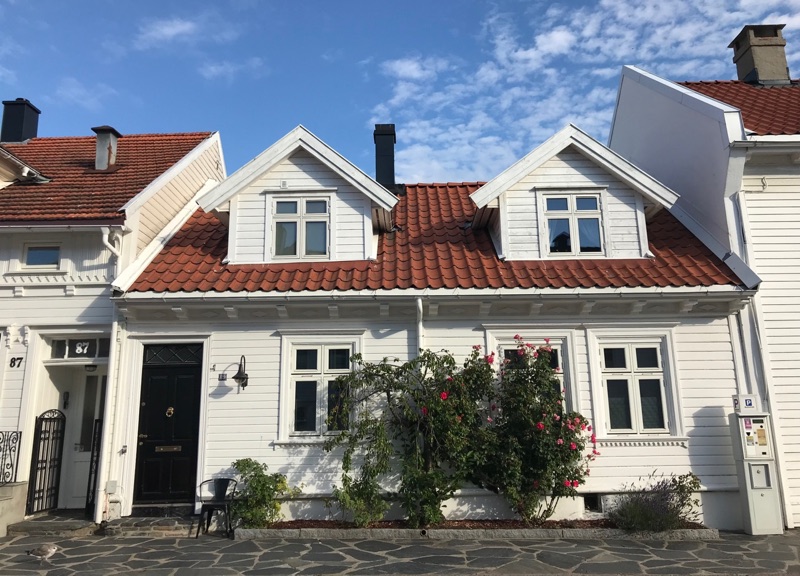
It's a cultural treasure within the city, reflecting Kristiansand's rich heritage and providing a glimpse into its past architectural styles.
Beyond Kristiansand
As the biggest city on the Southern coastline, Kristiansand is a gateway to many wonderful coastal towns. There are two that I’ve been to and can recommend.
To the east, Grimstad is a charming white-painted town known for its literary history—notably involving Henrik Ibsen—and cosy harbourfront cafes.
Meanwhile, to the west, Flekkefjord offers a mix of fjord views, white wooden houses, and quirky street art. Its charming Dutch Quarter recalls the importance of the timber trade over the years.
Alternatively, how about a visit to Lindesnes? This lighthouse marks Norway’s southernmost point.
Where to Eat
Connecting the emerging cultural quarter of Kunstsilo and Kilden to the city is Fiskebrygga, a vibrant harbourside hub for dining.
Fiskebrygga is not just a summer hotspot—its fish market and seafood restaurants remain open year-round, with locals snapping up high quality produce or simply enjoying a meal on a waterfront terrace.
Even if you’re not shopping or eating, Fiskebrygga is a popular spot for summer events or just watching the world go by.
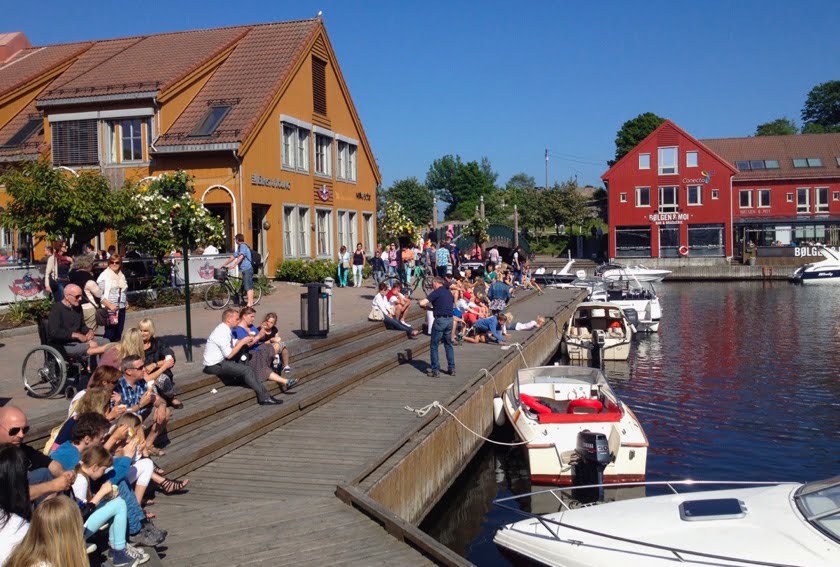
Several bars and restaurants are gathered together around a busy marina, with plenty of outdoor seating. Live concerts are held during the summer season every Tuesday night.
Where to Stay in Kristiansand
There are several good quality hotels in the downtown area. The Radisson Blu Caledonien in Kristiansand offers prime accommodation with its modern amenities and central location, ideal for exploring the city.
It's an especially handy location for getting to Kunstsilo, Kilden, and the Fiskebrygga district.
For more budget-friendly options, consider the nearby hostels that provide comfortable and economical stays. Those seeking a unique experience can opt for charming guesthouses in Posebyen and farther afield.
Kristiansand Travel Resources: Make the most of your trip to Kristiansand with these recommended travel resources:
🛏️ Find & Book a Hotel
🚘 Car Rental in Kristiansand
🚨 Travel Insurance
📸 Book Tours & Experiences
If you’re making a special journey to Kristiansand just to visit Dyreparken, consider staying nearby. There’s a large Scandic Hotel just across the street, or a safari-themed hotel on the site itself.
How to Travel to Kristiansand
If you're based in Norway's capital city, there are several methods to travel from Oslo to Kristiansand.
Kristiansand Airport is a little smaller than you may expect, most likely due to its proximity to Oslo. Nevertheless, SAS and Norwegian run daily flights to and from the capital, while Widerøe operates direct flights to and from Bergen and Trondheim.
By train, eight departures a day make the 4.5-5hr journey. There's also an option to travel by coach, which some people find more comfortable.
Around 6-8 Sørlandsekspressen coaches make the 5-hour journey from Oslo to Kristiansand, while the twice-daily Sør-Vest ekspressen shuttles passengers between Stavanger and Kristiansand in less than four hours.
By car, Kristiansand is a four-hour drive from the capital by way of the E18 highway.
Have you been to Kristiansand? If this article has inspired you, why not share your plans on Pinterest? We've got just the pin for you. Just hit the social sharing buttons.

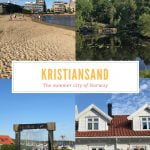

There’s a direct flight from London also, Stansted, on Wideroe. I think it’s a propeller plane, I am taking it in October. Will leave an update then! There’s also quite a cool offer on their website: unlimited flights in Norway for two weeks for £500
I’m taking the unlimited flights deal next week for guidebook research, it’s like it was made for me 🙂 Have fun in Kristiansand!